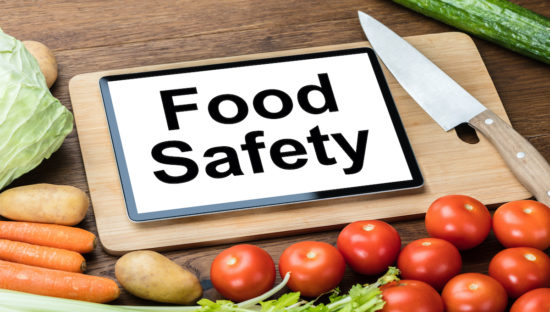A World Health Organization (WHO) group focused on food safety held an event recently to mark one year of existence.
The WHO Alliance for Food Safety had a 2-hour virtual meeting on June 30 to review challenges and achievements since its launch in May 2024.
The annual general meeting of the alliance will be hosted by the Food Safety and Quality Centre of Oman on Oct. 28 to 30. The meeting will review progress across working groups, agreeing on deliverables and timelines.
Other expected outcomes include a refined work plan for 2026–2027 and a reinforced commitment to advance foodborne disease surveillance and food contamination monitoring, aligning with the WHO Global Strategy for Food Safety 2022–2030.
Speaking during a webinar as part of the Health Talks on Food Safety series, Luz María De Regil, director of the Department of Nutrition and Food Safety at WHO, said the alliance was started last year as an effort to bring WHO collaborative centers together.
“We have a target to achieve as part of the food safety strategy to improve foodborne disease surveillance, particularly in Africa and the Eastern Mediterranean region. Many experts that are part of the alliance are scientists that devote their job to finding better ways to measure and detect foodborne diseases. Detection without action is insufficient. We need detection, management, communication and to make sure everyone is mobilized around food safety,” she said.
Focus on surveillance and monitoring
Carmen Savelli, from the Nutrition and Food Safety Department at WHO, said data is the evidence used by scientists to determine how to keep food safe.
“Foodborne disease surveillance and food contamination monitoring are two essential sources of data. These are the systems that generate the evidence needed for assessing risks, prioritizing actions and trying to evaluate how effective interventions are to keep food safe and prevent illnesses. But the problem is the capacities in most countries for strong surveillance and monitoring systems are limited. This is where the impetus for the alliance came from. The alliance is trying to raise awareness about the importance of food safety and to mobilize resources to support food safety programs,” he said.
Lusubilo Mwamakamba, from the WHO regional office for Africa, said the African region is estimated to have the highest foodborne disease burden.
“More than 91 million people fall ill each year due to consuming contaminated food and 137,000 deaths occur as a result. The need to strengthen food safety systems in the region has never been more urgent,” she said.
“Foodborne disease surveillance is a critical source of data in the risk analysis framework. The globalization of the food trade means a contaminated product in one country can cause an outbreak in another.
“Results from external evaluations have shown significant gaps in foodborne disease surveillance and monitoring capacities in the region. This is due to inadequate resources and limited lab infrastructure, among other things. We aim that by 2030 all countries would have in place lab-based foodborne disease surveillance systems for us to meet the global target.”
Examples of data use
Annie Locas, from the Canadian Food Inspection Agency (CFIA), spoke about the alliance’s working group on data and awareness.
“We want to make sure that decisions are based on sound science and data. We also want to help national authorities be aware of the importance of foodborne disease and food contamination monitoring. We want to see how we can make foodborne disease and food contamination data at the national and international level more available for everyone to share and work with. We want to use data to guide public health response, when there is an outbreak we need to know which food is implicated, what’s the traceability, how many people are sick and so on,” she said.
Locas presented on how Canada dealt with a problem of Salmonella in frozen raw breaded chicken products. A study showed a reduction of Salmonella in these products from 28 percent to 2.9 percent after new rules were put in place and the associated salmonellosis rate dropped by 23 percent.
“This highlights how having the data from monitoring and surveillance made it easy for the government to be able to introduce control measures and make a difference in the burden of illness,” she said.
Another example given by Locas was Listeria in enoki mushrooms, which are traditionally cooked in some regions of the world.
“When they are exported to North America they are not necessarily cooked by consumers. By sharing data with affected countries and countries producing enoki mushrooms we were able to refine some risk assessments and communication for industry and consumers. Understanding context of the data and interpretation is key, we have to be cautious in not making the data say things that are inaccurate,” she said.
(To sign up for a free subscription to Food Safety News, click here)



